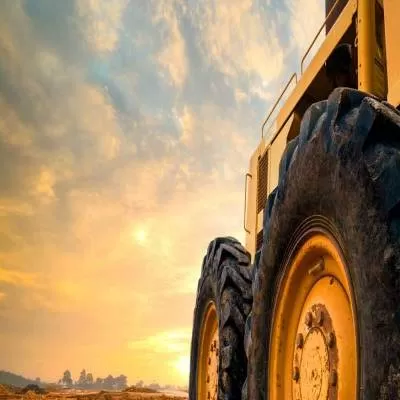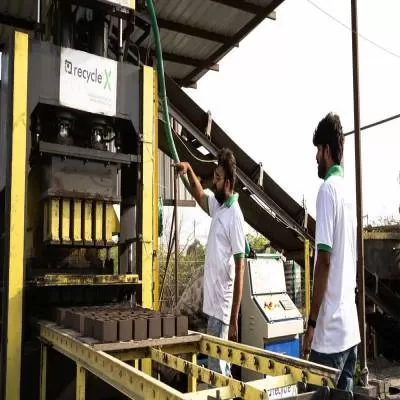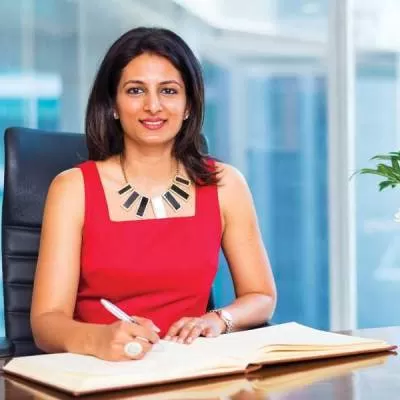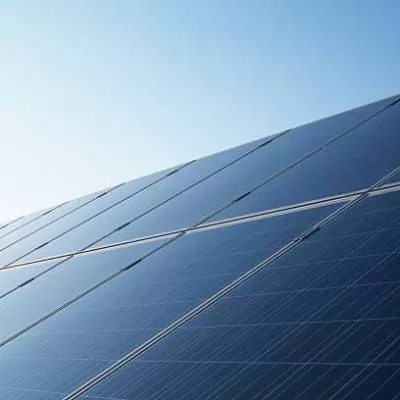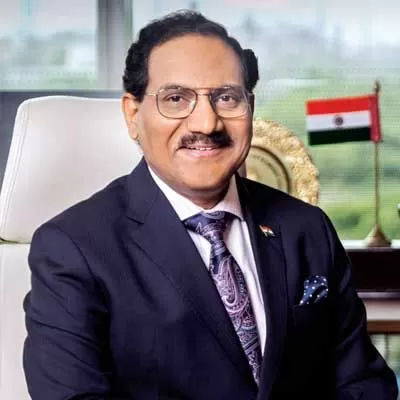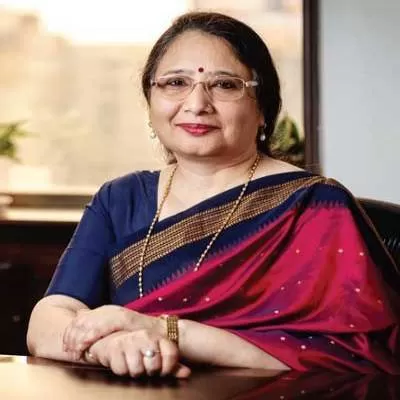- Home
- Infrastructure Energy
- POWER & RENEWABLE ENERGY
- Towards Carbon Neutral Status
Towards Carbon Neutral Status
Selected for the top 51 best practices on water management in India by CII, this is the first IGBC Gold-rated green building in Uttarakhand.
Aquamall Water Solutions in Dehradun is India's first green plant in the sector and the world's largest ultra violet (UV) based, water purification manufacturing unit. Also, it is the first Indian Green Building Council (IGBC) Gold-rated green building in Uttarakhand. Being the only water purification manufacturer in India to go green, Dr SK Sankar, Programme Director, Eureka Forbes Institute of Environment, highlights the several environment-friendly features this green plant incorporates, in conversation with Shriyal Sethumadhavan.
The initial step: As a part of the initial planning and design, our aim was to achieve carbon-neutral status by combining limited energy usage and obtaining electricity from a renewable energy source. The aim was to conserve energy and emissions from transportation as well as from buildings, equipment and processes. Also, the renewable energy source for electricity would be directly obtained by generating green energy and using low-carbon alternative fuels such as bio-fuels.
Qualifying for LEED Gold: There were certain criteria based on which Aquamall Green Plant received the LEED Gold rating. This was based on design features incorporated in this building under the five environmental categories plus innovation defined by LEED India, namely sustainable sites, water efficiency, energy and atmosphere, materials and resources, indoor environment quality, innovation and design process.
Performance on water efficiency: CII - National Committee on Water released a book on India's best practices in water management in India and Aquamall Green Plant was selected among the top 51. The building is fitted with water-efficient gadgets that can save usage upto 70 per cent. The fittings are designed with a preset flow and timer. Rainwater harvesting is also a part of our practices. Rooftop water is harvested in a tank for use; the excess would be used for bore-well recharge.
Rooftop water from the south-western side (far from the bore-well) would be recharged into the ground through recharge pits. In this way, most of the roof water would be trapped either in the tank or underground. With zero discharge premises, a part of the plant is a reed-bed wastewater treatment system. This system is a clean, economic and eco-friendly method of domestic sewage treatment as an alternative to the conventional systems. Specially selected plants are made to combine their aeration strength with highly efficient microbial cultures. The treated water will be recycled or reused for watering the landscape gardens. Thus this system reduces our fresh water requirements.
Energy-efficient measures: Windmills cannot run in many places, Dehradun being one of them. Here we use energy from the grid. So we have invested in a windmill down south in Tamil Nadu and are selling it to the local government. So if I use 10,000 units here, almost more than 5,000 units will be generated there in an eco-friendly manner and it goes to the grid. Hence we consume green power through offsite wind power for more than 50 per cent consumption. Apart from this, the energy conservation measures (ECMs) implemented in Aquamall Plant include double-glazed glass units for the façade, wall assembly of hollow fly-ash based blocks, maximum usage of daylight, CFL lamps, earth tunnel cooling for office spaces and energy meters for monitoring performance. Also, the building has been designed with various weatherproofing design features to reduce energy load. Further, for naturally ventilated spaces, an under-deck insulation system has been installed against the true ceiling. This is one of the most cost-effective methods to insulate the building envelope and protect occupants against extreme heat/cold climatic conditions without using energy. In the under-deck insulation system, bonded fibreglass wool is used for thermal and acoustic insulation under deck to reduce heat/cold gain or loss. Hence, this practice is environment-friendly in operation and has no operational costs.
Materials used: As a part of the environment-friendly construction process, we have used 15.6 per cent of recycled content for Aquamall Green Plant. Also, the building has used 65 per cent regional materials. This has reduced the movement of materials, thus reducing emission from transportation. Major materials include:
Prefabricated steel structure: Modular construction generates less waste materials and site disturbances compared to site-built structures. With the same plans being constantly built, the manufacturer has records of the quantity of materials needed for a given job. While waste from a site-built dwelling may typically fill several large dumpsters, construction of a modular dwelling generates much less waste. Also, catering to the speed of construction and faster return on investment, modular construction allows for the building and site work to be completed simultaneously, cutting overall completion time by as much as 50 per cent.
Fly-ash based bricks: Owing to their comparable density, these bricks do not cause any extra load for design of structures and provide better resistance for earthquake loads. Being moisture resistant, 6-12 per cent of water is absorbed as against 20-25 per cent for handmade clay bricks, reducing the dampness of the walls.
Hollow blocks: Acting as a thermal insulator, hollow blocks keep the plant away from any unwanted hot or cold temperature. Strong and durable, the concrete compacted by high pressure and vibration gives substantial strength to the block and proper curing increases the compressive strength of the blocks. With this, the carpet area can be increased as the strength of the block allows for 140 mm-thick block masonry instead of 230 mm-thick brick masonry (thinner wall). Also, owing to the high compaction given by our mixing and manufacturing process, seepage of water is almost nil and the hollow blocks avoid moisture inside. In addition to all of this, the use of hollow blocks proves economical as the thickness of plaster is minimum, thus saving omplaster, motor consumption, time and maintenance, and enabling speedy construction and water saving on site.
Improving air quality: The paints used in Aquamall have less Volatile organic compound (VOC) content. Also we have maintained the wall vs window ratio as per American Society of Heating, Refrigerating and Air-Conditioning Engineers (ASHRAE) standards for optimised air flow. Our corporate office is connected with geo-thermal air ventilation bringing in fresh air to occupants. This is run by VFD, a blower-based system controlled by various frequency drives. You can adjust the speed of the blower, which will subsequently adjust the airflow pattern. Also, the factory is connected with turbo ventilators. Their working is simple and they purify the air. Even the slightest breeze that touches the scientifically built ventilator blades makes the turbine rotate. This rotation gives rise to a centrifugal force that creates a vacuum inside the turbine. The partial vacuum is rep-laced by strong upward thwart of wind. This works for a perfect exhaust by the wind-driven ventilator. As these ventilators run on wind energy, there is no operating cost involved.
Taking it forward: When we applied for the IGBC rating, there was only green building certification and no separate norms for green building, factory, and so on. But our vision was to follow our company statement for providing a green and safe environment, following which today our green initiative is getting transmitted in the product concept. And each of our products, with a few already in the pipeline, will develop in a more eco-friendly way.
Project details:
Cost: About Rs 18 crore
Project manager: Dr SK Sankar. Mobile: (0) 93680 69700. E-mail: sankarsk@eurekaforbes.com
Architect/structural engineer: Mott MacDonald. Surender Kumar. Mobile: (0) 99112 05951. E-mail: surender.kumar@mott-maccdonald.com
Contractor: Nice Contractor Pvt Ltd. Yogesh Koushik. Mobile: (0) 98180 87676. E-mail: yogesh.dhruv@yahoo.co.in
HVAC engineer: Mott MacDonald. Tahir M Rehman. Mobile: (0) 99110 00559. E-mail: tahir.rehman@mottmac-india.com
Landscape architect: Dr Ajith S Gokhale. Mobile: (0) 98704 23023. E-mail: ajit.naturalsolutions@gmail.com
Interior designer: Farhad Gimmi. E-mail: farhad@gmail.com
Dr SK Sankar's perspective
"A green business in any organisation is to ensure that all processes, products, and manufacturing activities adequately add-ress current environmental concerns while maintaining a profit. In other words, it is a business that 'meets the needs of today's customer with minimum impact to its environment and without compromising the ability of future generations to meet their own needs'. Going green is the need of the hour; any business that needs to sustain longer needs to adopt green practices."
- Construction
- Update
- Portal
- Magazine
- CW-India
- June
- 2011
- India
- water management
- CII
- IGBC Gold-rated
- Green Building
- Uttarakhand
- Aquamall Water Solutions
- Dr SK Sankar
- Eureka Forbes Institute of Environment
- electricity
- renewable energy
- LEED Gold
- Rainwater harvesting
- wastewater treatment
- Dehradun
- Tamil Nadu
- ECMs
- Aquamall Plant
- investment
- VOC
- ASHRAE
- VFD
Selected for the top 51 best practices on water management in India by CII, this is the first IGBC Gold-rated green building in Uttarakhand. Aquamall Water Solutions in Dehradun is India's first green plant in the sector and the world's largest ultra violet (UV) based, water purification manufacturing unit. Also, it is the first Indian Green Building Council (IGBC) Gold-rated green building in Uttarakhand. Being the only water purification manufacturer in India to go green, Dr SK Sankar, Programme Director, Eureka Forbes Institute of Environment, highlights the several environment-friendly features this green plant incorporates, in conversation with Shriyal Sethumadhavan. The initial step: As a part of the initial planning and design, our aim was to achieve carbon-neutral status by combining limited energy usage and obtaining electricity from a renewable energy source. The aim was to conserve energy and emissions from transportation as well as from buildings, equipment and processes. Also, the renewable energy source for electricity would be directly obtained by generating green energy and using low-carbon alternative fuels such as bio-fuels. Qualifying for LEED Gold: There were certain criteria based on which Aquamall Green Plant received the LEED Gold rating. This was based on design features incorporated in this building under the five environmental categories plus innovation defined by LEED India, namely sustainable sites, water efficiency, energy and atmosphere, materials and resources, indoor environment quality, innovation and design process. Performance on water efficiency: CII - National Committee on Water released a book on India's best practices in water management in India and Aquamall Green Plant was selected among the top 51. The building is fitted with water-efficient gadgets that can save usage upto 70 per cent. The fittings are designed with a preset flow and timer. Rainwater harvesting is also a part of our practices. Rooftop water is harvested in a tank for use; the excess would be used for bore-well recharge. Rooftop water from the south-western side (far from the bore-well) would be recharged into the ground through recharge pits. In this way, most of the roof water would be trapped either in the tank or underground. With zero discharge premises, a part of the plant is a reed-bed wastewater treatment system. This system is a clean, economic and eco-friendly method of domestic sewage treatment as an alternative to the conventional systems. Specially selected plants are made to combine their aeration strength with highly efficient microbial cultures. The treated water will be recycled or reused for watering the landscape gardens. Thus this system reduces our fresh water requirements. Energy-efficient measures: Windmills cannot run in many places, Dehradun being one of them. Here we use energy from the grid. So we have invested in a windmill down south in Tamil Nadu and are selling it to the local government. So if I use 10,000 units here, almost more than 5,000 units will be generated there in an eco-friendly manner and it goes to the grid. Hence we consume green power through offsite wind power for more than 50 per cent consumption. Apart from this, the energy conservation measures (ECMs) implemented in Aquamall Plant include double-glazed glass units for the façade, wall assembly of hollow fly-ash based blocks, maximum usage of daylight, CFL lamps, earth tunnel cooling for office spaces and energy meters for monitoring performance. Also, the building has been designed with various weatherproofing design features to reduce energy load. Further, for naturally ventilated spaces, an under-deck insulation system has been installed against the true ceiling. This is one of the most cost-effective methods to insulate the building envelope and protect occupants against extreme heat/cold climatic conditions without using energy. In the under-deck insulation system, bonded fibreglass wool is used for thermal and acoustic insulation under deck to reduce heat/cold gain or loss. Hence, this practice is environment-friendly in operation and has no operational costs. Materials used: As a part of the environment-friendly construction process, we have used 15.6 per cent of recycled content for Aquamall Green Plant. Also, the building has used 65 per cent regional materials. This has reduced the movement of materials, thus reducing emission from transportation. Major materials include: Prefabricated steel structure: Modular construction generates less waste materials and site disturbances compared to site-built structures. With the same plans being constantly built, the manufacturer has records of the quantity of materials needed for a given job. While waste from a site-built dwelling may typically fill several large dumpsters, construction of a modular dwelling generates much less waste. Also, catering to the speed of construction and faster return on investment, modular construction allows for the building and site work to be completed simultaneously, cutting overall completion time by as much as 50 per cent. Fly-ash based bricks: Owing to their comparable density, these bricks do not cause any extra load for design of structures and provide better resistance for earthquake loads. Being moisture resistant, 6-12 per cent of water is absorbed as against 20-25 per cent for handmade clay bricks, reducing the dampness of the walls. Hollow blocks: Acting as a thermal insulator, hollow blocks keep the plant away from any unwanted hot or cold temperature. Strong and durable, the concrete compacted by high pressure and vibration gives substantial strength to the block and proper curing increases the compressive strength of the blocks. With this, the carpet area can be increased as the strength of the block allows for 140 mm-thick block masonry instead of 230 mm-thick brick masonry (thinner wall). Also, owing to the high compaction given by our mixing and manufacturing process, seepage of water is almost nil and the hollow blocks avoid moisture inside. In addition to all of this, the use of hollow blocks proves economical as the thickness of plaster is minimum, thus saving omplaster, motor consumption, time and maintenance, and enabling speedy construction and water saving on site. Improving air quality: The paints used in Aquamall have less Volatile organic compound (VOC) content. Also we have maintained the wall vs window ratio as per American Society of Heating, Refrigerating and Air-Conditioning Engineers (ASHRAE) standards for optimised air flow. Our corporate office is connected with geo-thermal air ventilation bringing in fresh air to occupants. This is run by VFD, a blower-based system controlled by various frequency drives. You can adjust the speed of the blower, which will subsequently adjust the airflow pattern. Also, the factory is connected with turbo ventilators. Their working is simple and they purify the air. Even the slightest breeze that touches the scientifically built ventilator blades makes the turbine rotate. This rotation gives rise to a centrifugal force that creates a vacuum inside the turbine. The partial vacuum is rep-laced by strong upward thwart of wind. This works for a perfect exhaust by the wind-driven ventilator. As these ventilators run on wind energy, there is no operating cost involved. Taking it forward: When we applied for the IGBC rating, there was only green building certification and no separate norms for green building, factory, and so on. But our vision was to follow our company statement for providing a green and safe environment, following which today our green initiative is getting transmitted in the product concept. And each of our products, with a few already in the pipeline, will develop in a more eco-friendly way. Project details: Cost: About Rs 18 croreProject manager: Dr SK Sankar. Mobile: (0) 93680 69700. E-mail: sankarsk@eurekaforbes.comArchitect/structural engineer: Mott MacDonald. Surender Kumar. Mobile: (0) 99112 05951. E-mail: surender.kumar@mott-maccdonald.comContractor: Nice Contractor Pvt Ltd. Yogesh Koushik. Mobile: (0) 98180 87676. E-mail: yogesh.dhruv@yahoo.co.inHVAC engineer: Mott MacDonald. Tahir M Rehman. Mobile: (0) 99110 00559. E-mail: tahir.rehman@mottmac-india.comLandscape architect: Dr Ajith S Gokhale. Mobile: (0) 98704 23023. E-mail: ajit.naturalsolutions@gmail.comInterior designer: Farhad Gimmi. E-mail: farhad@gmail.com Dr SK Sankar's perspective A green business in any organisation is to ensure that all processes, products, and manufacturing activities adequately add-ress current environmental concerns while maintaining a profit. In other words, it is a business that 'meets the needs of today's customer with minimum impact to its environment and without compromising the ability of future generations to meet their own needs'. Going green is the need of the hour; any business that needs to sustain longer needs to adopt green practices.


